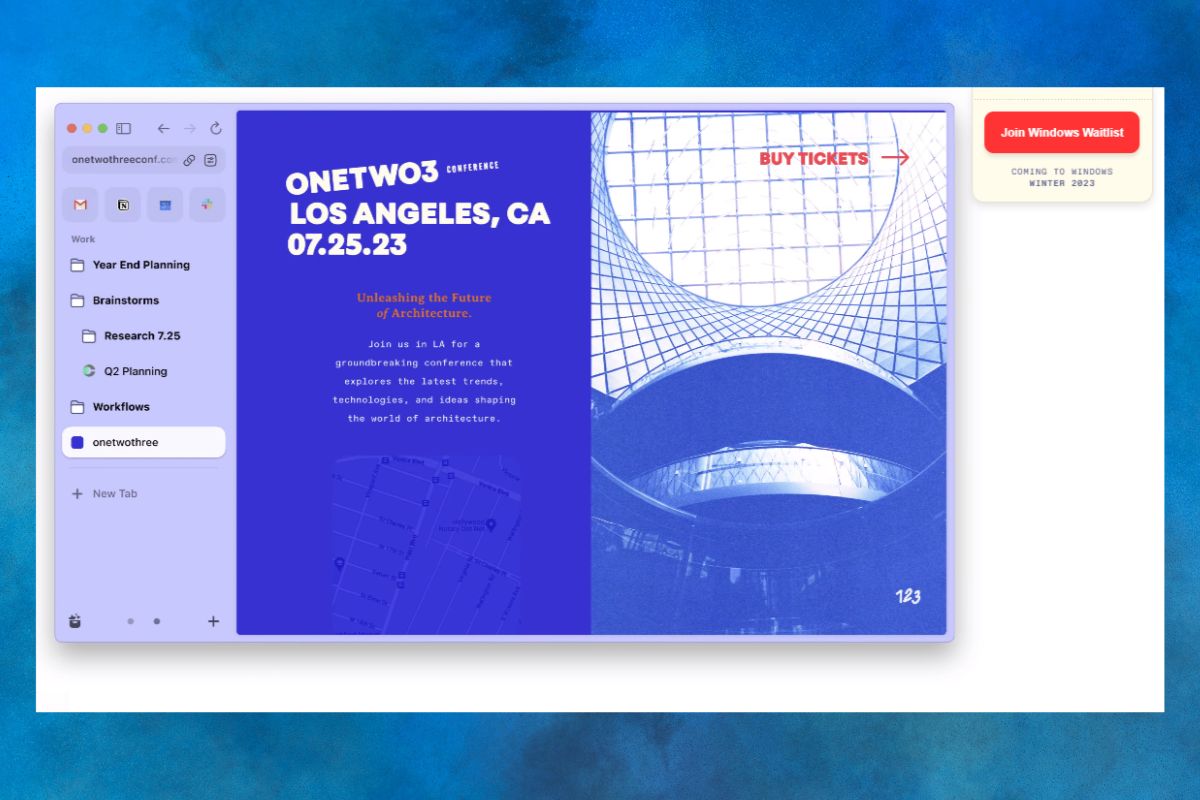After being in invite-only mode for over a year, The Browser Company’s Arc browser has now become available to the general public. With this announcement, the browser’s version number has been upgraded to 1.0. The company has also introduced a redesigned website to promote its public launch.
Currently, Arc is available exclusively for Mac users; however, the company has confirmed its intention to launch a Windows version later this year. While it does offer a companion app for mobile devices, it should be noted that this app is not a full browser.
The Browser Company was established in 2019 by Branch co-founders and former Facebook employees, Josh Miller and Hursh Agrawal. In 2021, the company managed to secure $5 million in funding from prominent investors, including LinkedIn’s Jeff Weiner, Medium’s Ev Williams, and Figma’s Dylan Field. The aim behind this investment was to create a fresh and innovative web browsing experience.
The Browser Company utilizes Chromium as the foundational architecture for the Arc browser, enabling seamless migration of saved bookmarks, logins, and extensions for its users.
Nevertheless, newcomers might encounter a slight learning curve as Arc has a distinctive approach to handling tabs, making them resemble applications more closely. However, for those well-versed in navigating browsers through keyboard shortcuts, using Arc will be a smoother experience. It caters to the tech-savvy audience with a range of customizable shortcuts for various actions, contributing to its somewhat “nerdy” product appeal.
Arc offers a unique feature called “Spaces,” enabling users to create distinct categories like “Work,” “Entertainment,” “Vacation,” and “Notetaking.” These Spaces allow for the organized storage of different tabs related to specific activities, ensuring quick access whenever needed. Within Spaces, users can pin up to six commonly used tabs that remain consistent across all Spaces, and they can also pin additional tabs exclusively inside each individual Space. Additionally, the browser boasts built-in note-taking and whiteboard tools, adding to its feature-rich nature.
The unconventional approach of placing tabs in the sidebar and archiving them instead of closing them outright may initially pose a challenge for some users, potentially leading to frustration within the first few hours of use. To address this concern, the company has revamped its website, aiming to provide more comprehensive information about the browser before users even try it out. This approach seeks to smoothen the learning curve, making it easier for users to grasp the innovative features and functionalities of Arc.
In recent months, The Browser Company has introduced some exciting updates for Arc.
Firstly, they launched an iPhone app in March, allowing users to organize tabs into spaces while browsing on their mobile devices. This way, users can easily access and manage their tabs at a later time, enhancing the cross-device browsing experience.
Additionally, they introduced a captivating feature called “Boosts.” With Boosts, users can personalize the theme and layout of websites, even having the ability to remove specific sections and buttons, all without requiring any coding skills. This feature offers a fun and dynamic way for users to customize their browsing experience according to their preferences.
In recent weeks, Arc has made notable improvements by introducing a convenient toolbar positioned at the top of the browser window. This enhancement simplifies the process of accessing the URL bar and site settings, as users no longer need to navigate to the sidebar for these functions. The new toolbar offers a more streamlined and user-friendly browsing experience.
Furthermore, The Browser Company has introduced several noteworthy enhancements to Arc. These include adding picture-in-picture support specifically for Google Meet, as well as incorporating a per-site control center that allows users to enable or disable boosts, developer mode, and picture-in-picture settings. Additionally, Arc has undergone tweaks to enhance its multi-window support, resulting in improved speed performance.
Taking cues from other browsers in the market, such as Microsoft Edge, Opera, and Sigma OS, which have integrated AI assistants, Arc is also considering the integration of AI into its browser. In a recent demonstration, the company showcased how AI could assist Arc users in modifying certain elements of websites. While these AI-based features are not yet available, The Browser Company has expressed its commitment to delivering more updates and new functionalities following the v1 release. This suggests that users can expect exciting developments in the future.



